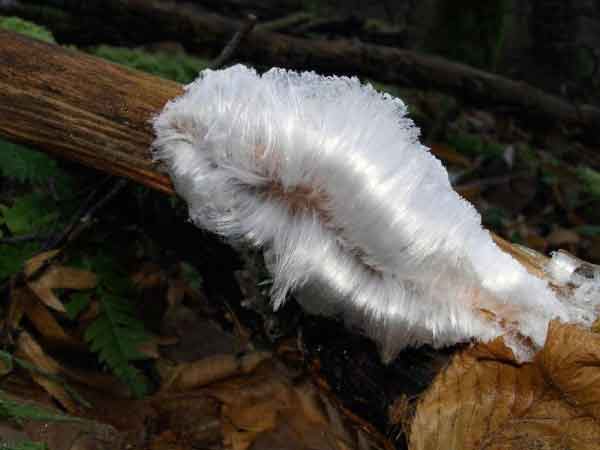
Bern, Switzerland (BBN)-The white hair ice found on rotting tree branches is produced by a fungus called Exidiopsis effusa.
This is an almost 100 year old theory that was first studied by Alfred Wegener in 1918, reports the Pulse Headlines.
This “hair-ice” is usually found on humid winter nights, and researchers are finally getting to the bottom of what causes it to grow, the European Geosciences Union reported.
Physicist Christian Matzler from the Institute of Applied Physics at the University of Bern in Switzerland, was wandering in the forest when he saw the hair ice for the first time, “we were surprised by its beauty […] sparked by curiosity, we started investigating this phenomenon, at first using simple tests, such as letting hair ice melt in our hands until it melted completely.” He recalled.
The white hair ice found on rotting tree branches is produced by a fungus called Exidiopsis effusa.
Diana Hofmann, a physicist, and Gisela Preuß, a biologist,also took part on the study and recollected and analyzed samples of hair-ice-bearing wood collected in the winters of 2012, 2013 and 2014 in forests near Brachbach in western Germany.
Preuß analysed the wood samples using microscopic techniques and identified eleven different species of fungi.
“One of them, Exidiopsis effusa, colonised all of our hair-ice-producing wood, and in more than half of the samples, it was the only species present,” the research said.
The study published in the journal Biogeosciences informs that the fungus is responsible for producing a sort of recrystallization inhibitor that stabilizes the ice hairs and allows them to form as they do.
Preuß explained that the ice hair form during the night and melt again once the sun shines on the rotting wood.
“The action of the fungus is to enable the ice to form thin hairs – with a diameter of about 0.01 mm (0.0004 inches) – and to keep this shape over many hours at temperatures close to 0°C (32°F),” the research team explains.
Mätzler, on the other hand, performed experiments in a forest at Moosseedorf, Switzerland.
He found, confirming guesses by other researchers, that the driving mechanism responsible for producing ice filaments at the wood surface is ice segregation.
Before Matzler, Alfred Wegener (1918) attempted to understand how this hair ice form.
He theorized that a mycelium must be responsible for the curious ice formation. Now, Matzler managed to prove Wegener’s theory.
BBN/SK/AD